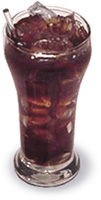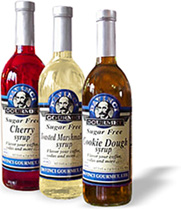
|
 By the time our next newsletter is published it will be only two days before St. Patrick's Day, and like many holidays where food plays a part, it's important to find ways to enjoy low-carb versions without feeling deprived. So we've decided to do our St. Patrick's Day issue NOW, so that you'll have plenty of time to prepare for "the wearin' o the green". Do you know the history of St. Patrick's Day? St. Patrick was born about 390 AD in Roman Britain. As a youth he was kidnapped by Irish raiders and sold into slavery in Ireland. He escaped six years later and fled to Gaul. After several years of monastic life, he returned to Ireland in 432 AD as a missionary to the people there. Saint Patrick is most known for driving the snakes from Ireland. While it is true there are no snakes in Ireland, there probably never have been — the island was separated from the rest of the continent at the end of the Ice Age. As in many old pagan religions, serpent symbols were common and often worshipped. Driving the snakes from Ireland was probably symbolic of putting an end to that pagan practice.  It is said that he used the
three-leafed shamrock to explain the concept of the Trinity; hence its
strong association with his day and name.
It is said that he used the
three-leafed shamrock to explain the concept of the Trinity; hence its
strong association with his day and name.
St. Patrick is a hero in Ireland. In fact, there are about 60 churches and cathedrals named for him in Ireland alone. One of the most famous cathedrals is St. Patrick's Cathedral in Dublin. These grounds bear the mark of the place where St. Patrick baptized his converts.  Green is associated with Saint Patrick's Day because it is the color of spring,
Ireland, and the shamrock.
Green is associated with Saint Patrick's Day because it is the color of spring,
Ireland, and the shamrock.In American cities with a large Irish population, St. Patrick's Day is a very big deal. Big cities and small towns alike celebrate with parades, "wearing of the green," music and songs, Irish food and drink, and activities for kids such as crafts, coloring and games. Some communities even go so far as to dye rivers or streams green... and, yes, even green beer! |

PAGE 1 PAGE 2 PAGE 3 PAGE 4 PAGE 5 PAGE 6 PAGE 7
home welcome my story journal shopping beginners guide tips discussion forums product spotlight recipes faq articles
announcements books links news dining out contact online magazine make a donation site map site search guestbook
|
Contents copyright © 1999 � 2003 Low Carb Luxury.
All rights reserved. Use of this site constitutes your acceptance of our Terms and Conditions. No reproduction
without expressed written consent. Site Development by: Accent Design Studios. |


 Like flavored sodas? I adore Cherry Cola, but don't like the aspartame in
Cherry Coke or Pepsi, so I add a splash of DaVinci Sugar Free Cherry syrup
to Diet RC or DietRite cola! You can do the same with other flavors. Vanilla
Cola... Cola with Toasted Marshmallow... just use your imagination. And you
can add the syrups to other flavors of sodas as well. The Peach or the Key Lime
are terrific added to a lemon-lime.
Like flavored sodas? I adore Cherry Cola, but don't like the aspartame in
Cherry Coke or Pepsi, so I add a splash of DaVinci Sugar Free Cherry syrup
to Diet RC or DietRite cola! You can do the same with other flavors. Vanilla
Cola... Cola with Toasted Marshmallow... just use your imagination. And you
can add the syrups to other flavors of sodas as well. The Peach or the Key Lime
are terrific added to a lemon-lime.
